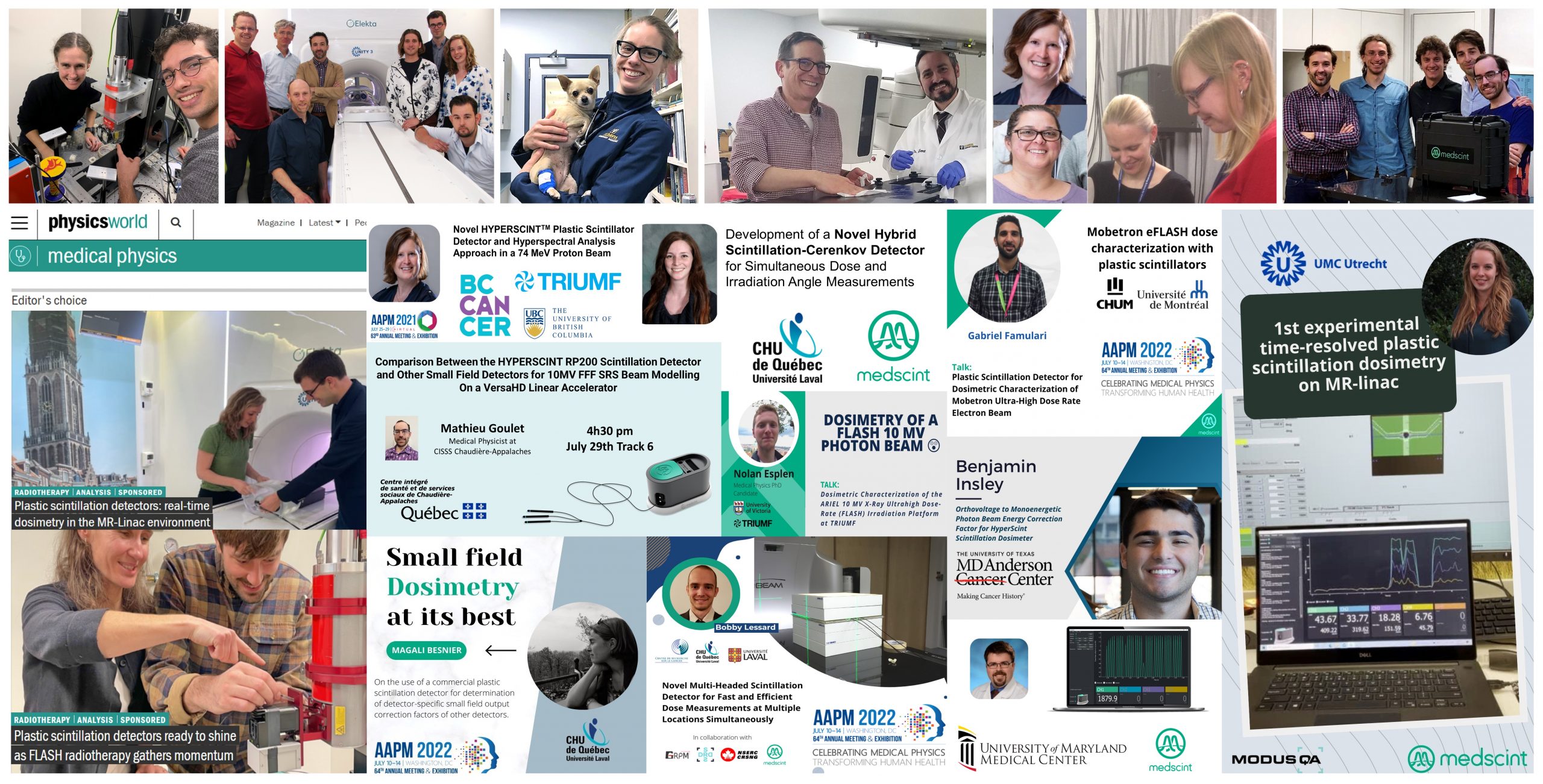Small field dosimetry of a Varian TrueBeam High Definition MLC linear accelerator using the Hyperscint RP200 scintillation detector.
Purpose: To evaluate the performance of the new Hyperscint RP200 plastic scintillator for small field measurements of a Varian TrueBeam linear accelerator in comparison with the current state-of-the-art methodology in the clinic.
Methods: Small field measurements were performed using different detectors: a diamond detector (microDiamond, PTW), a diode (Razor, IBA), a compact ion chamber (Razor, IBA), and a 1mm x 1mm
plastic scintillation detector (Hyperscint RP200, Medscint). Correction factors based on measured field sizes, following TRS483 recommendations, were applied to all measurements. Output factors of a
TrueBeam linear accelerator were measured for field sizes of 0.5 cm to 2 cm for jaws and MLC configurations for 6-MV, 6-MV FFF and 10-MV FFF photon beams. Output factors for different circular collimators (0.4 cm to 2 cm) were also obtained at 10-MV FFF. Scintillator measurements were compared to the small-field dosimetry methodology used clinically.
Results: No correction factors were necessary for the plastic scintillation detector measurements. Scintillator measurements were within 1.1% of the standard methodology for all the small field geometries studied. Average relative differences were (0.3±0.5)%, (0.7±0.3)%, and (0.2±0.2)% for the 6-MV, 6-MV FFF, and 10-MV FFF, respectively. Output factors of circular field sizes down to 0.4-cm diameter were obtained with an average relative difference of (0.1±0.4)%, including a maximum difference of 0.7% for the smallest field.
Conclusion: This new scintillation dosimetry research platform shows great promises for small field dosimetry. It has the potential to be used as part of a single-detector no-correction-factor methodology.
2021 COMP ASM
L.Gingras, B.Côté, F.Berthiaume, S.Lambert-Girard, D.Leblanc, L.Archambault, L.Beaulieu, F.Therriault-Proulx | CHU de Quebec – Universite Laval, QC, CA, Département de radio-oncologie et Axe Oncologie du CRCHU de Québec, QC, CA, MedScint, QC, CA
